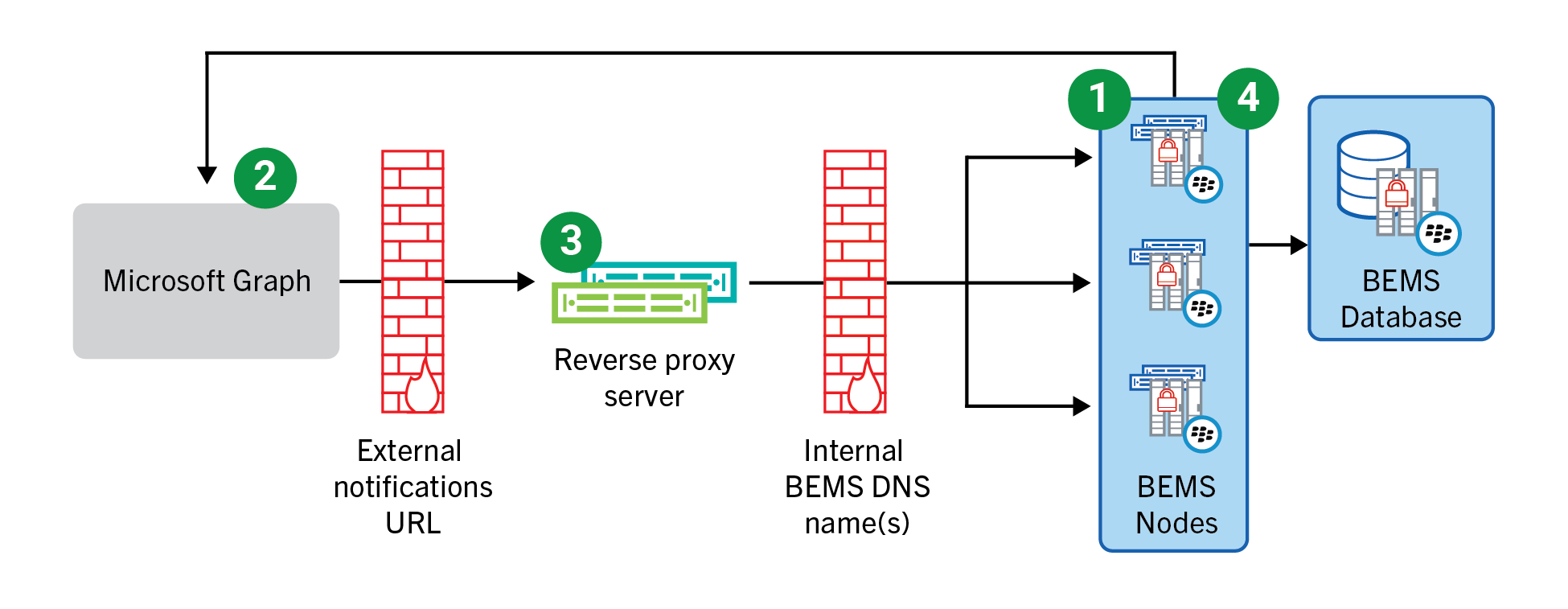Architecture: BEMS notification flow using the Microsoft Graph API
BEMS
notification flow using the Microsoft Graph
APIIn 2022,
Microsoft
started to deprecate the Microsoft Exchange Web
Services
(EWS) for Microsoft Microsoft Exchange
Online
APIs replacing the EWS with Microsoft Graph
. For more information, visit techcommunity.microsoft.com and read 'Upcoming API Deprecations in Exchange Web Services for Exchange Online'.This diagram shows how
BEMS
uses Microsoft Graph
to send notifications to devices when a reverse proxy is used. BlackBerry
recommends using a reverse proxy. 
Component name | Description |
|---|---|
BEMS | BEMS consolidates several BEMS services used to send work data to and from BlackBerry
Dynamics apps, including BlackBerry Push Notifications (BlackBerry Mail), BlackBerry Connect , BlackBerry Presence , and BlackBerry Docs . BEMS listens for notification URI sent by the Microsoft Graph API. |
Reverse proxy server | The reverse proxy server receives the Microsoft Graph connection and proxies the connection to the private BEMS URI. |
Microsoft Graph | Microsoft Graph is a RESTful web API that allows you to communicate with Microsoft Cloud service resources. |
- BEMSsends a request toMicrosoft Graphto subscribe to mailbox changes (for example, new email). The External Notification URL is included in the request.
- Microsoft Graphinitiates a connection to your organization's reverse proxy using the External Notification URL and sends a request that includes notification details.
- The reverse proxy server intercepts theMicrosoft Graphconnection request and translates/routes the request to yourBEMScluster or instance.
- BEMSreceives the request from the reverse proxy and sends the new notification (for example, new email) toBlackBerry Workbased on the notification rules and the user's device settings.